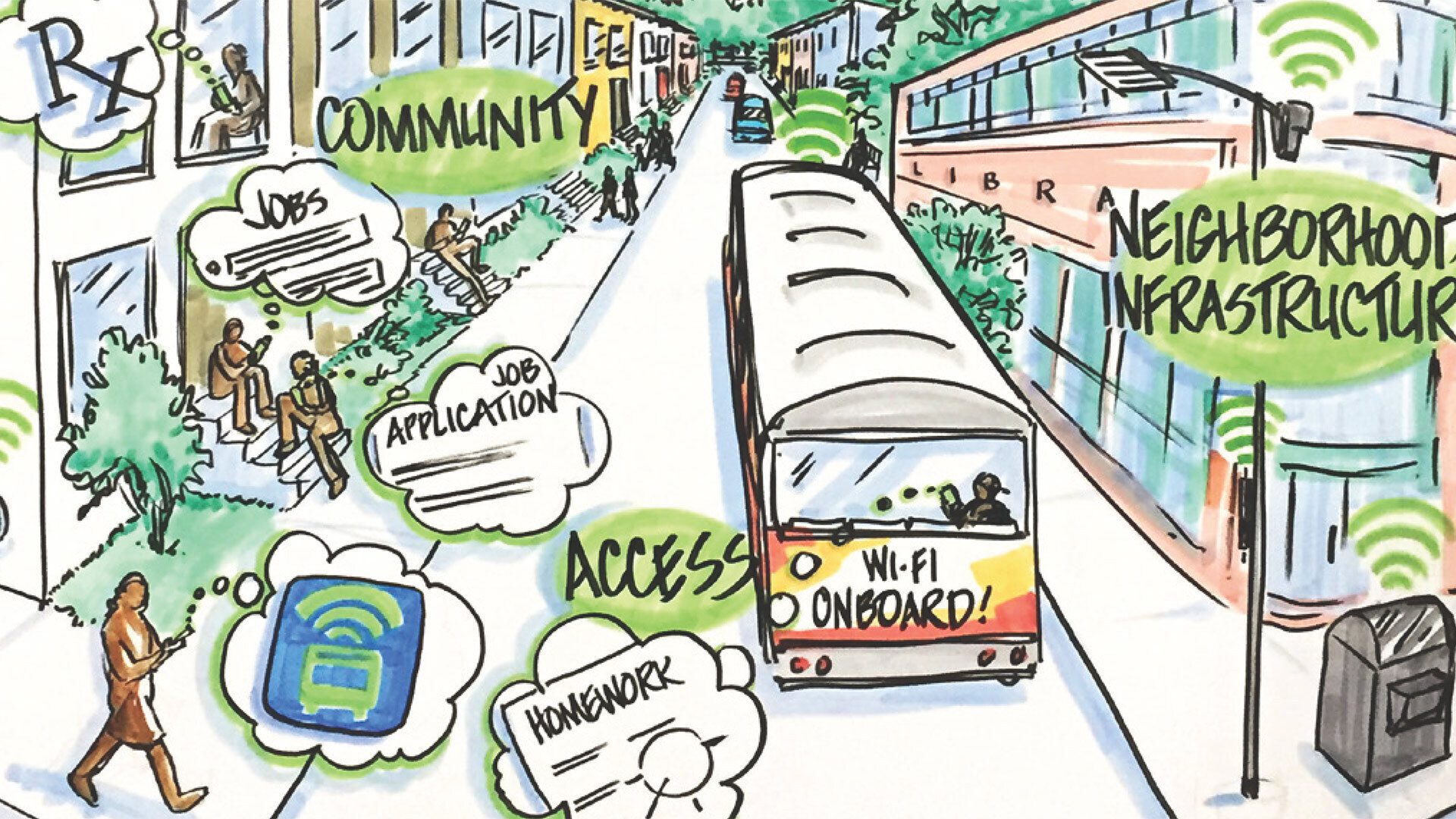- February 04, 2019
- By Colleen Crowley M.Jour. ’19
From Wi-Fi hotspots to autonomous buses, technology is a gateway to opportunity and key to a more livable city. But tech can also exacerbate the differences between haves and have-nots in health, education and more, prompting a new study led by UMD researchers to work with West Baltimore residents on what “smart city” ideas could meet their needs.
Their report found that a lack of jobs and safety are priorities in this largely low-income, African-American neighborhood, along with reliable, affordable internet connectivity and computer access. Continuing such conversations is critical to closing the gaps, they say.
“The community in West Baltimore feels very left behind by a number of city initiatives,” said Urban Studies and Planning Assistant Professor Willow Lung-Amam, who is also director of community development at UMD’s National Center for Smart Growth, which led the study. The project also included colleagues from Morgan State, Johns Hopkins and the University of Baltimore and former American Studies Associate Professor Sheri Parks, now with the Maryland Institute of Art. “We’re really hopeful that this study will have an impact on planning and policy,” Lung-Amam said.
Shonte Eldridge, deputy chief of operations and Smart City strategist in the office of Baltimore Mayor Catherine Pugh, said that the research “helps us get a sense of what our constituents want.”
The state’s largest city is weighing or already using a series of smart tools to move into the future without leaving its struggling neighborhoods behind. Despite skepticism from some West Baltimore residents about how these technologies can address the issues that they care about most, Lung-Amam said there is “a real sense of hope about what technology can bring to this community.” But to realize the benefits of smart city technologies and lessen costs, Lung-Amam said that officials and technology providers need to deeply engage with city residents they may not see as their most important constituents.
Here’s what residents had to say in focus groups and surveys about current and future tech investments:
Free WiFi citywide is a “high priority in the mayor’s office,” Eldridge said. Survey respondents listed benefits such as better access to transit information, to the resources students need to complete their homework, and to information about jobs.
Smart trash cans, trash compactors that need less frequent emptying and that alert sanitation employees when they are full, hit the streets last fall. Since then, 280 Smart Cans have been installed throughout business districts and neighborhoods alike. The Department of Public Works states that, depending on availability of funding, they plan on rolling out another 270 cans in other business districts in 2019. But residents have concerns about their cost and whether they put sanitation jobs at risk.
Smart street and traffic lights can monitor everything from air quality to traffic flow, but some residents pointed out that the city has often not maintained existing infrastructure in the neighborhood. On the state level, Gov. Larry Hogan has promoted the installation of self-adjusting traffic lights in an attempt to ease congestion.
Blue light cameras have been used in the city for neighborhood surveillance in one form or another for over 10 years. They get mixed reviews from residents, some of whom say that they might reduce crime. Many are concerned with how the information collected is used.
ShotSpotter, a gunshot detection system that uses audio sensors on rooftops and streetlights, was introduced throughout both East and West Baltimore last summer. Residents again raised the issues of neighborhood surveillance and racial profiling and said that people already call police when shots are fired.
Driverless buses, the most futuristic proposal, also generated questions: Residents said they wouldn’t trust a bus without a driver, and that the vehicles, like all technology, could be hacked. They also said drivers help maintain a sense of order and civility among passengers.
